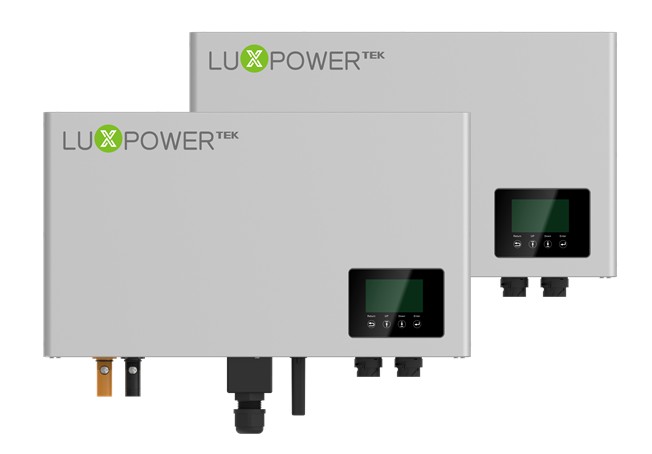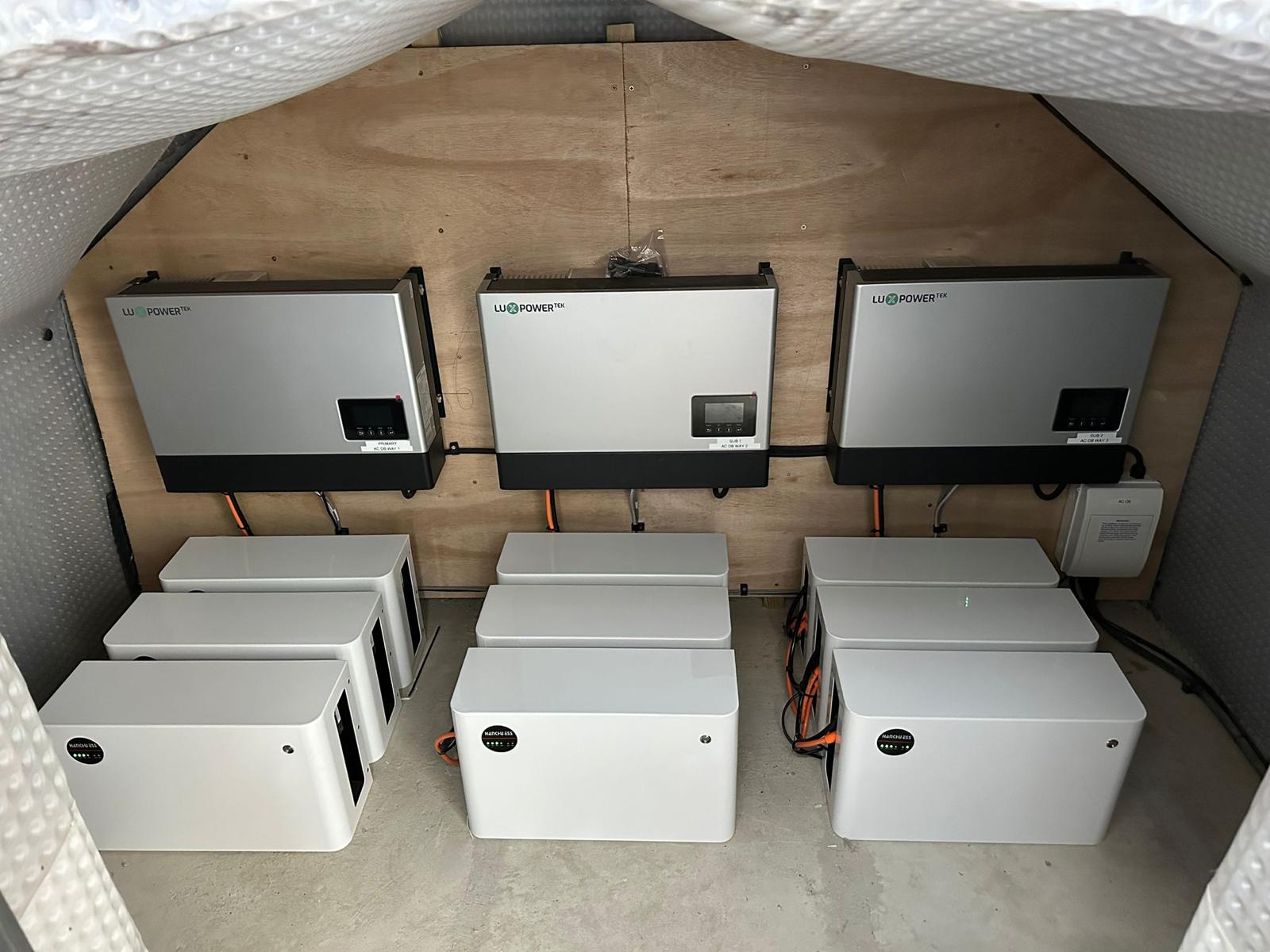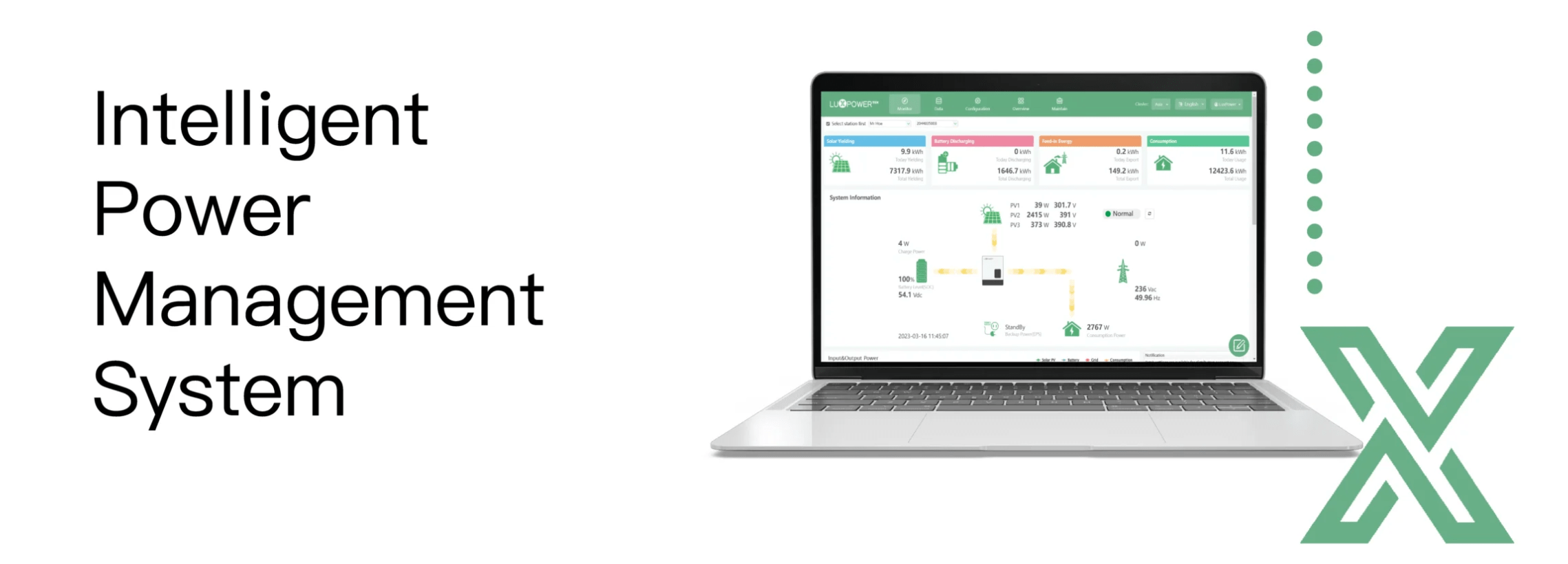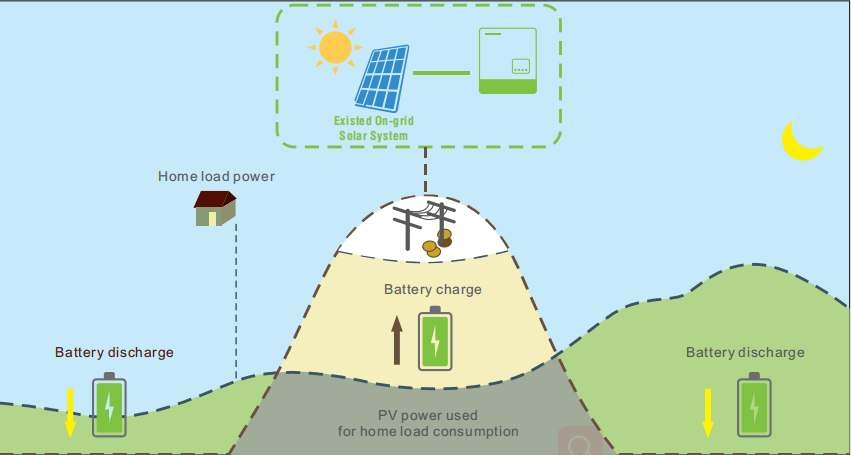Lux Power LXP 3600 Squirrel Pod Controller


The Squirrel Pod is an enhanced version of the typical AC units. What sets it apart is its added hardware, enabling it to connect with up to nine other Squirrel Pod controllers, either now or in the future. Every Squirrel Pod requires its own batteries and can be connected either individually or through a collective connection to the customer’s fuse board.
They operate in tandem. Only the Primary controller is equipped with CT clamps, while the rest function in a Subordinate mode. This setup allows the Primary controller to manage the entire system, instructing other units when to charge or discharge their batteries.
Both the standard AC units and the Squirrel Pod variants have been registered on the ENA Register with G100 certification.
The entire Luxpower collection features sophisticated automatic charging and discharging programming, enabling customers to take advantage of charging during low-cost electricity periods. Specialized programs have been designed to facilitate effortless charging with Octopus Agile and various other Octopus Energy plans.
The AC units are available in two distinct versions. The standard ACS model allows for maximum charge and discharge rates of up to 3500W (16 amps), representing a leading-edge power capacity for battery interactions in the market. Recognizing the desire for future system expansion among customers, Luxpower introduced an innovative variant of the standard AC unit. This updated model, dubbed the Squirrel Pod (reflecting its storage-focused nature like a squirrel), was developed to offer customers the option to extend their system as needed in the future.
The Lux Power Squirrel Pod represents an advanced evolution of standard Lux Power AC units. This advanced design incorporates additional hardware, allowing for the potential to link a second, third, or up to ten Squirrel Pod controllers together, either now or in the future. Each Squirrel Pod requires its own set of batteries and can be connected either individually or through a shared connection to the customer’s fuse board.
These units operate in parallel, meaning that only the Primary controller is equipped with CT clamps. The remaining units are configured in a Subordinate working mode, wherein they follow the directives of the Primary unit, which controls all operations and instructs the other units when to charge or discharge their batteries.
Both the standard AC units and the Squirrel Pod units are registered on the ENA Register and hold G100 certification.
To find out more about our Lux Power Squirrel Pod systems please CLICK HERE.
Product Information:
- Battery Types Li-Ion or Lead-acid
- Nominal Battery Voltage (V) 48
- Max. Charging Voltage (V) SSO (Configurable)
- Max. Charging Current (A) 70
- Max. Discharging Current (A) 70
- Battery Capacity (kWh) >3
- Charging Mode for Li-Ion Battery Self-adaption to BMS
- Charging Mode for Lead-acid Battery 3-stage
- Max.Apparent Power Output to Utility Grid (VA) 3600
- Max.Apparent Power from Utility Grid (VA) 6000
- Nominal Output Voltage (V) 230
- Nominal Ouput Frequency (Hz) 50/60
- Max.AC Current Output to Utility Grid (A} 16
- Max.AC Current From Utilily Grid(A} 26
- Output Power Factor -1 (Adjustable from 0.8 leading to 0.8 lagging)
- Output THDI <3%
- Grid Connection Single phase
- Inrush Current 10A/10us
- Max. Output Fault Current 50A/20us
- Max. Output Apparent Power (VA) 3600
- Peak Output Apparent Power (VA) 4700,30sec
- Automatic Switch Time <0.01s
- Nominal Output Voltage (V) 230 (±2%)
- Nominal Output Frequency (Hz} 50/60 (±0.2%)
- Max. Output Current (A) 16
- Back-up Over Current Protection(A} 40
- Output THDV (linear load} <3%
- Anti-islanding Protection lntegrated (AFD)
- Output Over Current Protection Integrated
- Output Short Protection Integrated
- Output Over Voltage Protection Integrated
- Operation Temperature Range (‘C) -25-60
- Storage Temperature (“C) -40-65
- Relative Humidity 0-95%
- Operation Altitude (m) 4000
- Cooling Natural Convection
- Noise (dB) <25
- User Interface LCD &APP
- Interface With BMS RS 485 /CAN
- Communication With Cloud Wi-Fi
- Weight (kg) 15.6
- Size (Width•Height•Depth mm) 550•320·110
- Mounting Wall Bracket
- Protection Degree IP 65
- Environment Category Outdoor & indoor
- Standby Self Consumption (W) <10
- Topology High Frequency Isolation
- Safety Regulation & EMC G83,
- CE, EN61000-6-1/3,
- EN62109-6-1/2,
- AS4777,
- IEC62040-1

Understanding the Squirrel Pod System
Squirrel Pod units serve as charge controllers for battery storage setups. They automatically capture any leftover solar energy from your property and charge the batteries, respecting the system’s maximum charging capacity.
If you intend to leverage the grid for economical electricity rates, the Squirrel Pod will ensure your batteries are charged, considering both the quantity of batteries and the system’s charge rate.
A single Squirrel Pod unit boasts a charging capacity of 70A (3.5kw). Linking another Squirrel Pod controller effectively adds an extra 3.5kw of charge/discharge capability.
You have the flexibility to install Squirrel Pod units individually, allowing for the easy addition of a second unit in the future. Alternatively, they can be established in dual or triple configurations right from the start.
Switching to a Squirrel Pod from a conventional Lux AC unit offers the advantage of scalability, giving you the option to expand your system as needed.
Lux Power Squirrel Pod Key Features
Up To 20 Years Warranty
All our Lux Power Controllers come with 12 Years manufacturers warranty, However at a small extra charge you can upgrade your warranty to 20 years giving you a piece of mind when it come to your investment
70Amps Charge & Discharge Rates
Most controllers on the market only allow you a maximum of 60 amps charge & Discharge rate. You will also need to use a minimum of 3 Lithium batteries to achieve the maximum charge and discharge rate of 3Kw. Our Lux Power Squirrel Pod Controller allows you to use 72 amps and with just 2 of our Hanchu 3.2kWh lithium batteries we can achieve up to 3.5kW of Charge Discharge rates with a single controller.
Advanced Monitoring
Our Lux Power Squirrel Pod comes we Free Advanced Monitoring that gives you a full insight to your system showing more information then you can handle. This information can be viewed via a web portal or Mobile App
Advanced EPS
The Lux Power Squirrel Pod Controller has an impressive enhanced EPS feature will switch over in 0.01s in the event of a power cut, meaning these systems can also be used with Grid Share incentive programmes.
Grid Charge & Agile Compatible
New Energy providers will now provide extremely cheap off peak renewable electricity. The Lux Power Squirrel Pod can be programmed to take advantage of these cheap off peak tariffs to charge the batteries to use the energy when the tariffs are high.
Power When You Need It
Our Lux Power LXP 3600 AC has three time settings to allow you to choose when you want your batteries to discharge. All other systems on the market only allow their systems to charge & discharge to set default parameters which is no good if all your battery power is gone before you get back home from work!
Which Lithium batteries can I use with my Lux Power Squirrel Pod controller?
Hanchu 9.4kWh Systems
Hanchu 9.4kWh Systems
Lux Power Squirrel Pod With
Hanchu 9.4kWh Blade Lithium
Battery Systems
Hanchu 3.2kWh Systems
Hanchu 3.2kWh Systems
Lux Power Squirrel Pod With
Hanchu 3.2kWh HPD Lithium
Battery Systems
Uhome 2400 Systems
Uhome 2400 Systems
Lux Power Squirrel Pod With
Uhome 2.4kWh LFP Lithium
Battery Systems
Lux Power Monitoring

The Lux monitoring can be accessed through a downloadable app on your phone or via a web portal. The app is excellent, providing you with an overview of your system’s status while you are on the move. For more detailed information and data analysis, however, the web portal is the optimal tool. To view a live demo of the Lux Power Web Portal, click here: Lux Power Web Portal.
To learn more about the Lux Power online & App Monitoring CLICK HERE
Lux Power Squirrel Pod Coupled Inverter Application

AC Coupling Variable Working Modes

Retrofitting an existing on-grid solar system to a solar energy storage hybrid system is made simple by installing an Lux Power Squirrel Pod series inverter, which is coupled on the AC side with a battery pack.
In the Self-Use mode, the AC-coupled inverter monitors the power generated by the on-grid inverter. This power is prioritized for use by local loads. Any remaining power is directed to be stored in the battery through the AC-coupled inverter. If there is still excess power beyond that, it is fed back into the electrical grid. This mode is set as the default, as it promotes higher self-consumption of generated electricity and substantially reduces energy bills.

